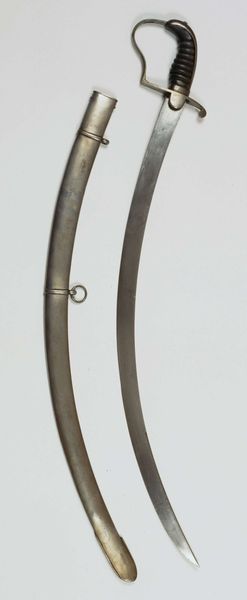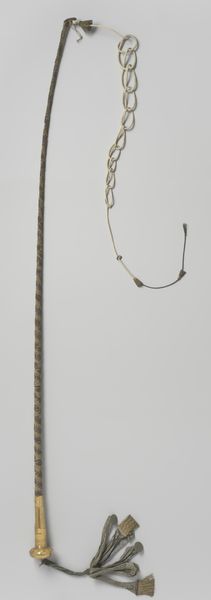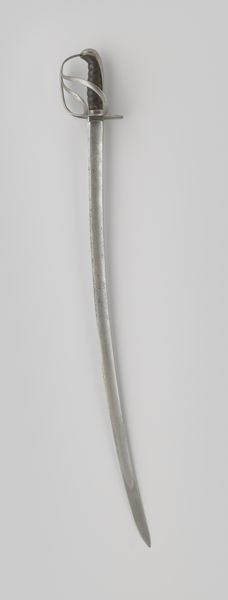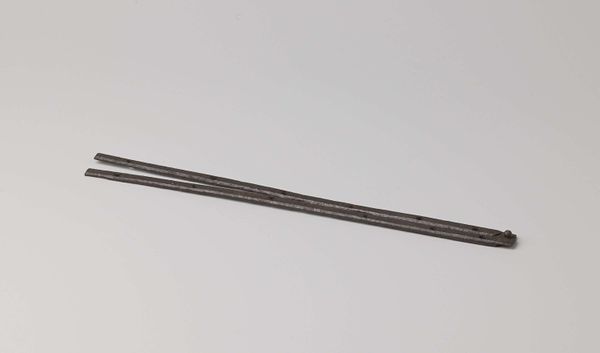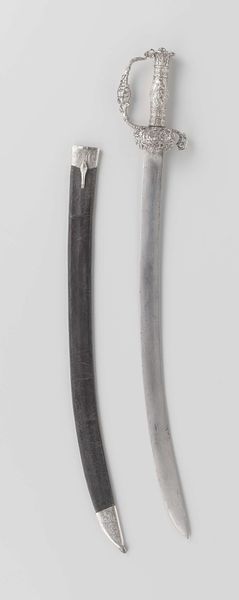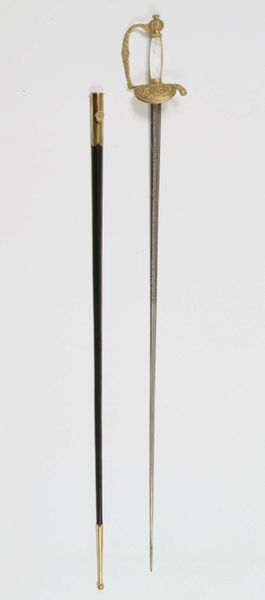
Sabel met schede van de Gardes d'Honneur (1e Keizerrijk 1813) c. 1811 - 1814
0:00
0:00
metal, sculpture
#
neoclacissism
#
metal
#
sculpture
#
sculpture
#
history-painting
Dimensions: length 95 cm, length 83.5 cm, width 2.9 cm, depth 0.94 cm
Copyright: Rijks Museum: Open Domain
Editor: So here we have, dating from around 1811 to 1814, "Sabel met schede van de Gardes d'Honneur" – a saber and its scabbard that once belonged to the Guards of Honor during the First Empire. Crafted by Johann Schimmelbusch using metal, it strikes me as rather austere, all sharp edges and gleaming surfaces. What do you make of it? Curator: Austere, yes, but think of what it represents. Not just cold metal, but power, allegiance, perhaps a touch of desperate grandeur. Hold it up to your mind's eye alongside Delacroix's Liberty Leading the People – same era, very different feel, but both touched by revolution and empire. Now, feel the grip. What do you imagine holding it? Editor: I imagine a soldier…proud but probably scared? Maybe young. This saber, it’s a tool, but it’s also this really potent symbol. The curve of the blade is surprisingly elegant, I'd almost call it beautiful if I wasn’t aware of its purpose. Curator: Exactly! Beauty born of purpose, elegance in lethality – a key element of neoclassical design. Close your eyes and imagine being in that time and being Napoleon's honour guard. Now open your eyes and tell me, what does it make you consider regarding modern times? Editor: How different, and how similar things are. We don't use swords anymore, but there's still so much...symbolism in tools and weapons. It makes me think about who decides what is beautiful, and what isn’t. Curator: And that, my dear Editor, is the question every good piece of art invites us to ask. Swords to ploughshares, as they say.
Comments
No comments
Be the first to comment and join the conversation on the ultimate creative platform.
